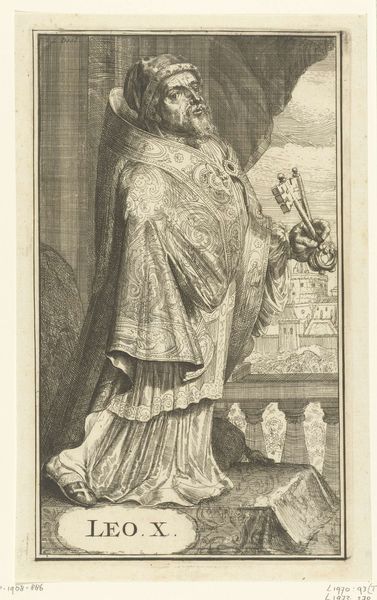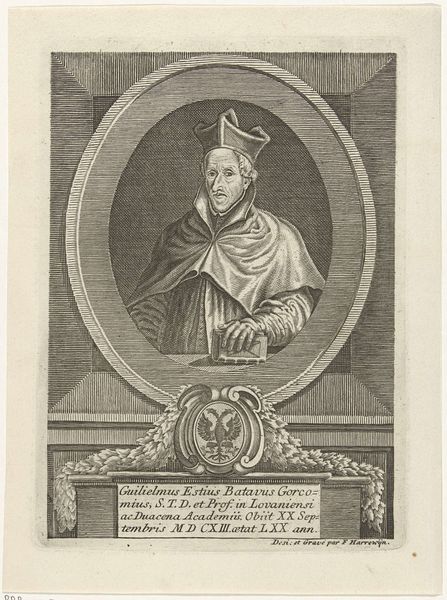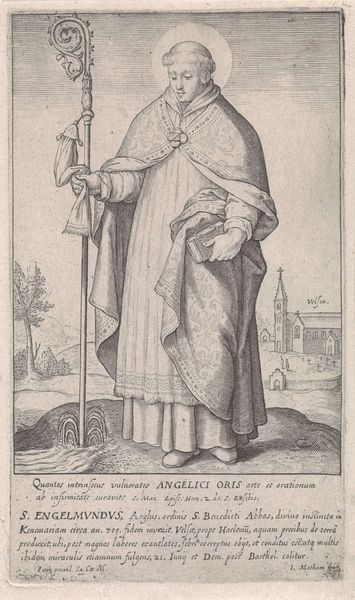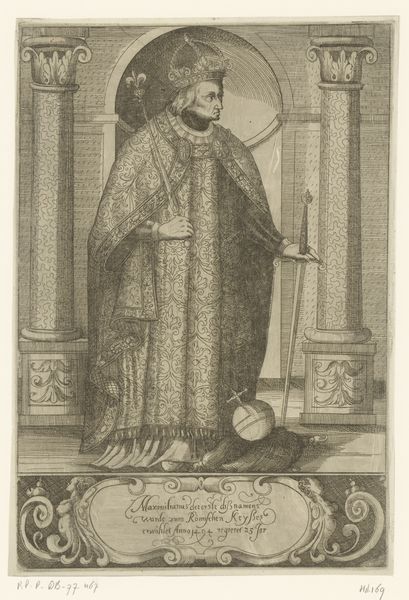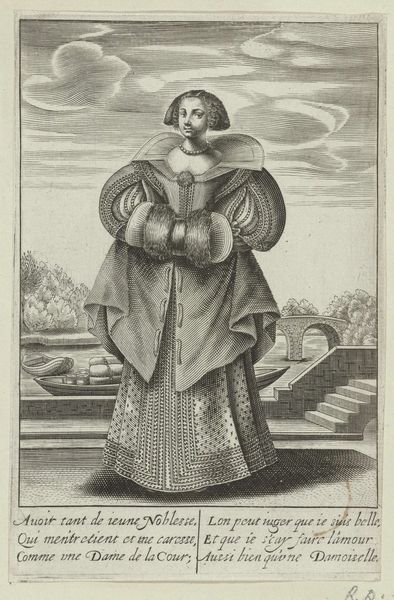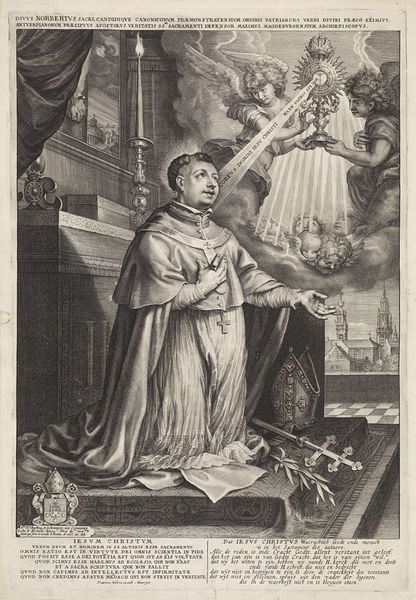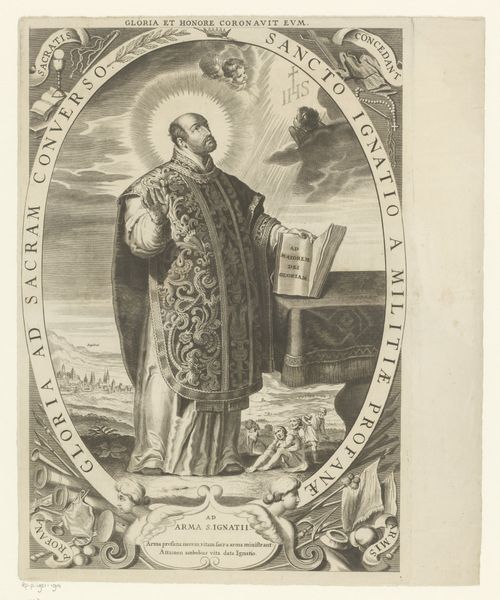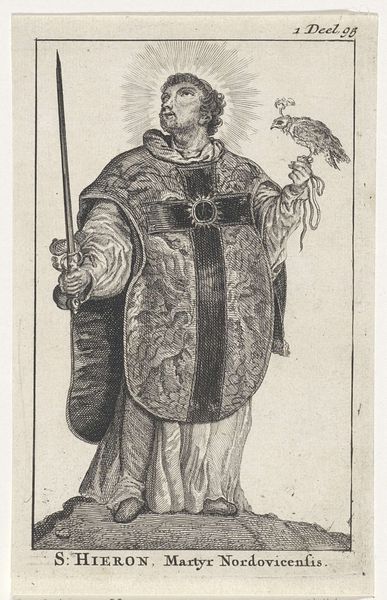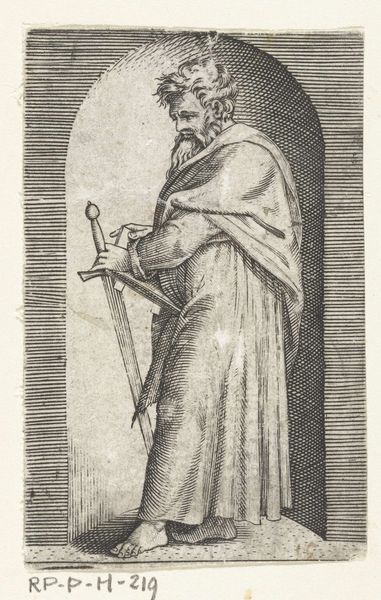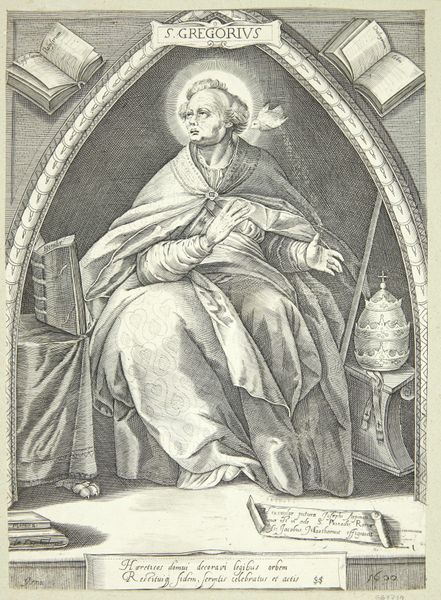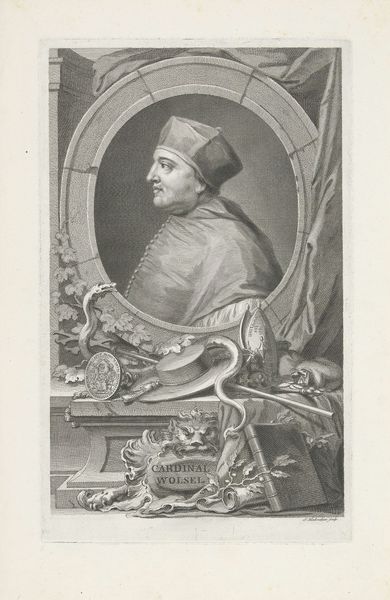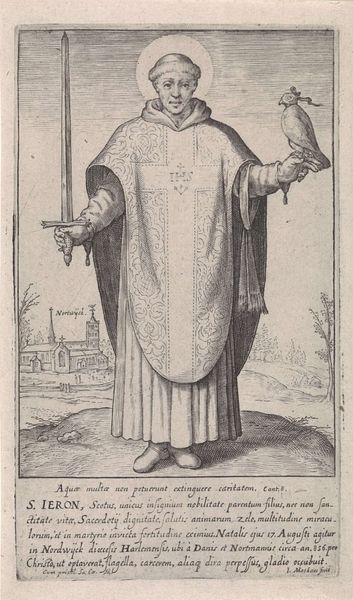
print, engraving
#
portrait
#
baroque
# print
#
old engraving style
#
portrait drawing
#
history-painting
#
engraving
Dimensions: height 251 mm, width 179 mm
Copyright: Rijks Museum: Open Domain
Curator: Standing before us is "Ignatius van Loyola," an engraving created between 1670 and 1724 by Jacob Gole. It is currently part of the Rijksmuseum's collection. Editor: Wow, there's such an intense, reverent feeling. The guy is glowing, and look at those clouds practically swirling around that IHS symbol! Is he holding a manifesto or what? Curator: In fact, he is. The book reads “Ad Majorem Dei Gloriam,” the Jesuit motto: “For the Greater Glory of God.” Ignatius founded the Jesuit order, so we see a representation of devotion, service, and a rather rigid structure. Gole's print was made in the Baroque era, a period defined by precisely this kind of dramatic religiosity, aimed to inspire both awe and submission. Editor: Well, the costume design works wonders on me! Look at all those details; the drapery on those sleeves must have taken a life-time of intricate line-work to capture! Also the positioning of the head and raised hand--such perfect self-confidence in being chosen. Curator: The original artwork from which Gole developed this engraving has not been firmly identified, but art historians consider prints as disseminators of key religious and political images in an age before mass media, like modern social media. This allows one to view and access powerful icons for many to share at a very reasonable cost. It made visual culture democratic in new ways. Editor: It's also remarkable what a different meaning something as ubiquitous as a "halo" can carry in different eras and in different contexts. Like how the sun has meant totally different things in different cultures at different times. But with Gole's Ignatius, that ring just signifies Purity to me. Curator: Precisely, it reinforces the ideological framing Jacob Gole has imposed. The portrait's aim goes beyond likeness, it aims for constructing legacy. The social function of the print amplifies this political role for religious leaders. Editor: Funny how it still packs a visual punch even now. Sort of makes you think about how images control us still, or at least try. It's a powerful thing that even prints can convey these meanings with a minimum of medium. Curator: Agreed. Gole's rendering reveals that prints, like photographs, do not show “truth,” but participate actively in culture as propaganda machines. Editor: Yeah. Looking back, I feel Gole perfectly captured the baroque's desire to instill passion and communicate authority through the detailed medium of the etching, all within a few skillfully applied strokes.
Comments
No comments
Be the first to comment and join the conversation on the ultimate creative platform.
